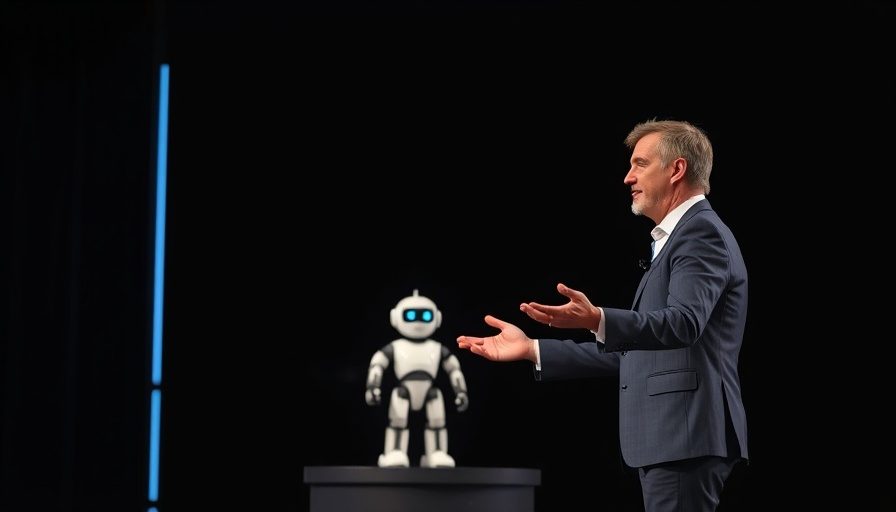
Revolutionizing Robotics: What Jensen Huang's Announcement Means
In a groundbreaking announcement at a recent event, Jensen Huang, the CEO of NVIDIA, unveiled a new robotics engine that promises to elevate the capabilities of robots across various industries. While the technical nuances of this advancement are complex, its implications for the entertainment industry, particularly in creating lifelike droids for Disney's 'Star Wars' franchise, are both exciting and significant.
The Intersection of Technology and Entertainment
The intersection of robotics and entertainment has often been seen in sci-fi movies, but today, it is becoming reality. Huang's new robotics engine leverages advanced AI to create adaptive smart systems. This technology refers to robots that are not only able to perform tasks but can also learn and adapt to new environments and challenges. For Disney, this means the potential for droids that can respond more realistically—not just on screen but at theme parks and events.
Enhancing Guest Experiences at Disney Theme Parks
Imagine walking through the streets of Star Wars: Galaxy’s Edge in Disneyland and encountering a droid that interacts with you in a completely personalized manner. With Huang's engine, Disney could develop droids that behave like real characters, recognizing returning visitors, recalling past interactions, and adjusting their behavior accordingly. These advancements are set to transform guest experiences, making them more immersive and engaging.
Future Predictions for Robotics in Entertainment
As technology evolves, one can predict that droids will not only be more interactive but will also become increasingly integrated into storytelling. Future 'Star Wars' films could feature AI-driven characters that learn from audience feedback, perhaps even changing their dialogue or actions based on viewer reactions in real time.
The Broader Impact on Industries Beyond Entertainment
While Disney stands to benefit greatly from this new technology, the implications extend far beyond the realms of entertainment. In sectors like healthcare, manufacturing, and education, robust, adaptable robotic systems could revolutionize how tasks are performed. In healthcare, robots could interact with patients in a more personalized manner, providing companionship and assistance tailored to individual patient needs.
Counterarguments: Addressing Concerns
Despite the excitement surrounding these advancements, there are notable concerns regarding employment and the ethical implications of creating increasingly autonomous robots. Critics argue that reliance on technology, especially in industries like entertainment, may lead to a decrease in human jobs. However, supporters suggest that as robotic systems take on more routine tasks, they could free up humans for more creative and complex roles.
Common Myths about Robotics
A common misconception is that robots are destined to replace human workers entirely. In reality, the evolution of robotics is more about collaboration. Rather than displacing jobs, these technological advancements can enable humans to innovate and improve operational efficiencies.
Practical Tips for Engaging with Advanced Robotics
For businesses looking to integrate cutting-edge robotics into their operations, starting with pilot programs can be a smart strategy. Understanding the technology’s capabilities kicks off the journey toward full integration and allows for adjustment of strategies based on real-world results. Additionally, staying informed about industry trends will help businesses be proactive rather than reactive in adopting advances.
Conclusion: Ready for the Future?
As we stand on the brink of a new era in robotics, the excitement surrounding Jensen Huang's announcement is palpable. With significant advancements on the horizon, it is essential for both consumers and businesses to engage with this technology thoughtfully. Keep an eye on how robotics will reshape experiences, from theme parks to everyday interactions.
 Add Row
Add Row  Add
Add 




Write A Comment